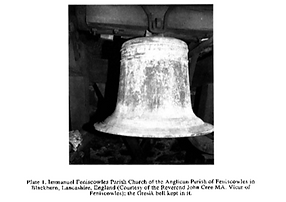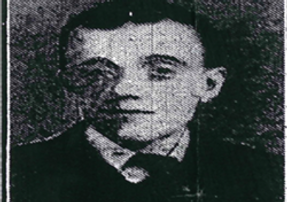WELCOME TO IMMANUEL
AT THE HEART OF THE FENISCOWLES AND PLEASINGTON COMMUNITY


HISTORY OF IMMANUEL
Below is the history of our church, however we have found out more about the local area as well such as the stories of our own local war heroes. You can view more of our history in the tabs below.
IMMANUEL CHURCH
William Feilden of Feniscowles, Member of Parliament for Blackburn laid the first stone of the church on 5th February 1835. The entire expense of the building amounted to over £1000, and was paid for by private subscription, including £500 given by the Incorporated Society for Building New Churches. William Feilden who also contributed £100 towards the building, gave the site for the church. Stone to build the church was taken from a local quarry, Stanworth Delph. The building is of a square perpendicular style, completed in 1836 and, according to Nicholas Pevsner, pre-dates the style by about 25 years. It is rectangular in shape with a tower and spire at the west end, and a porch surmounted by a cross and faced with the Feilden coat of arms at the south west corner. Dr. Whittaker, Vicar of Blackburn, designed the church. There were eight pinnacles on the tower, but they were removed having become dangerous through erosion. Behind the War Memorial is “The Albert Oak” tree, which was planted March 10th 1863, in celebration of the royal wedding of H. R. H. Prince of Wales to H. R. H. Princess Alexandra of Denmark. They became King and Queen after the death of his mother Queen Victoria in 1901. The whole interior of the church was restored in 1932 during a 3-month closure. The original “Boxed Pews” which had doors, were removed, the pulpit and chancel screen were erected and the lower part of the walls were panelled in matching oak. The church was also re-floored in wood and composition tiles. There are seats in the church for two hundred and thirty worshippers. There are seven stained glass windows in the church of various periods. The three in the east were given in 1861 by the Tattersall family of Pleasington, their coat of arms appears in the bottom centre panel of the main east window. The windows above depict scenes from the Last Supper and the Passion. The upper window depicts the Crucifixion of Our Lord. The north window in the chancel shows Our Lord, and in the south window in the chancel is Moses with the Tablets of the Law. The Walsh window in the south nave represents Christ the King surrounded by Saints, Apostles and Kings who have died for their faith. The resurrection window in the south nave is in memory of the Revd. Alexander Gallaher who was the vicar at Immanuel for thirty-three years. Of the memorial windows in the north nave, one is in memory of Mrs. Gallaher, and the other (The Holy Family) in memory of those who fell in the 1914 - 1918 war. The names of those who fell during the first and second World Wars are also inscribed on the Celtic cross in the church grounds. The Church Bell has caused interest of late, in that we have discovered it is an ancient Javanese Bell, clearly constructed for a purpose other than an English parish church. Research in England, Holland and Java continues. It is unique as far as we know, there being no other bell in the world of this type hung in a church.
_edited.jpg)


